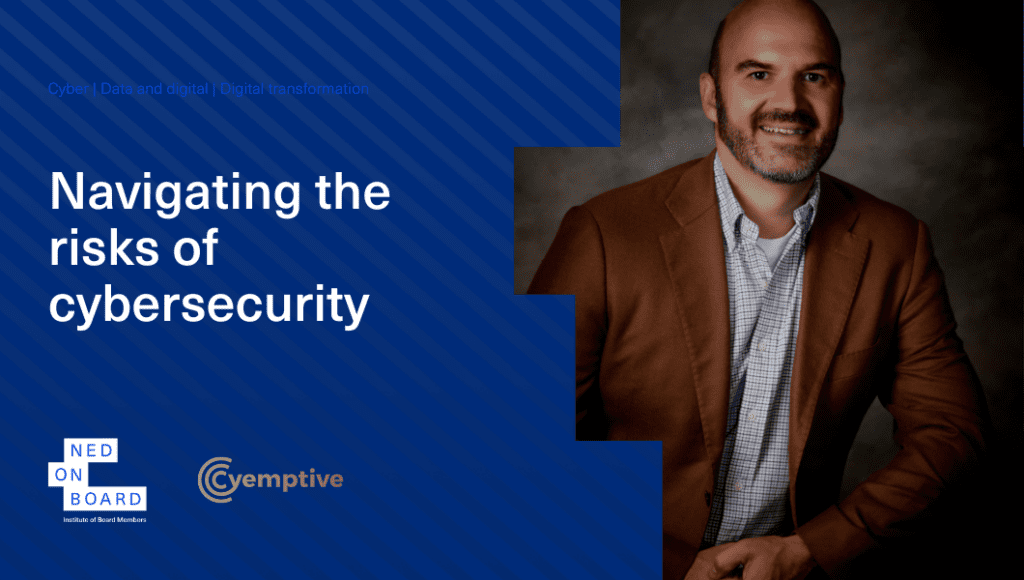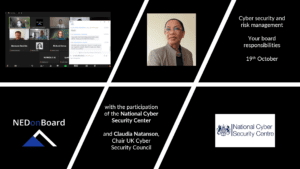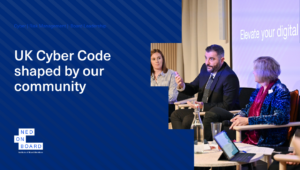In the dynamic world of corporate governance, boardrooms are increasingly confronted with complex challenges: how to harness the benefits of digitalisation while safeguarding against the growing threat of cyberattacks. This delicate balancing act is characterised by managing two risks: firstly, the imperative to invent new digital business models that leverage cutting-edge technology, and secondly, the need to address the inherent IT governance and IT security risks that accompany these advancements.
New tools and technologies such as cloud computing, artificial intelligence (AI), Web3, and the metaverse have brought unparalleled opportunities for innovation and growth. However, they have also exponentially expanded the attack surface. This makes organisations more vulnerable for potential cyber threats and attacks.
To illustrate the consequences of an expanded attack surface, consider the infamous Capital One data breach. In this case, an abandoned virtual machine in the cloud with elevated administrative privileges became the gateway for hackers to steal sensitive information. This incident serves as a stark reminder that the digital landscape is fraught with vulnerabilities.
One of the most prevalent and menacing threats today is ransomware. Cybercriminals are becoming increasingly adept at infiltrating organisations, encrypting critical data, and demanding hefty ransoms in exchange for decryption keys. The vulnerable IT landscape makes companies susceptible to these malicious attacks, which can disrupt operations, compromise sensitive data, and lead to significant financial and reputational damage.
In response to the increasing cyber threats, board members and senior executives must take proactive steps to protect their organisations. While business recovery plans and robust cybersecurity strategies are essential, there’s another crucial dimension to consider.
Board members seeking reassurance that their organisation is keeping pace with advancements in cyber technologies can ask what pre-emptive technologies are in place.
Pre-emptive cybersecurity is an innovative approach that seeks to remove cyber threats before they even penetrate your systems. Rather than solely relying on a reactive defense model, pre-emptive cybersecurity leverages advanced tools and techniques to proactively identify and neutralise potential threats. This proactive stance allows organisations to be in command of their cybersecurity posture.
The transition from a defense-centric approach to a pre-emptive cybersecurity model marks a paradigm shift in how organisations mitigate cyber risks. Here are some key steps to consider:
- Invest in cutting-edge technology: Explore state-of-the-art cybersecurity solutions that use machine learning, behavioral analytics, and threat intelligence to identify and counteract threats in real-time.
- Continuous monitoring: Implement 24/7 monitoring of your IT environment to detect any anomalies or suspicious activities that may indicate a breach or cyberattack in progress.
- Employee training: Ensure that your employees are well-versed in cybersecurity best practices. Human error remains a significant factor in many cyber incidents, and a well-trained workforce can be your first line of defense.
- Collaborate with experts: Partner with cybersecurity experts and engage in ongoing consultations to stay ahead of emerging threats and vulnerabilities.
In the digital age, the board’s view on risk management needs to change. The risks of creating new digital models and handling IT governance and security require a proactive approach. With the growing attack surface and ransomware threat, organisations must consider preemptive cybersecurity.
Boards should take a pro-active approach to cybersecurity such as with using pre-emptive technology which can help their companies shift from constant defense to control and resilience. The aim is to stay ahead of cyber threats, letting organisations focus on innovation and growth, knowing their assets are secure. In today’s digital era, cybersecurity control isn’t a luxury but a necessity for long-term success.
Written by Rob Pike, Director and Founder of Cyemptive Technologies, provider of military grade cyber security to eliminate threats before they infiltrate your systems. Command your security with pre-emptive, award-winning technology. Please visit https://www.cyemptive.com/ for information.
References:
A Systematic Analysis of the Capital One Data Breach: Critical Lessons Learned; ACM Digital Library https://dl.acm.org/doi/10.1145/3546068
A full timeline of the MGM Resorts cyber attack; Cyber Security Hub https://www.cshub.com/attacks/news/a-full-timeline-of-the-mgm-resorts-cyber-attack
Danish cloud host says customers ‘lost all data’ after ransomware attack; TechCrunch https://techcrunch.com/2023/08/23/cloudnordic-azero-cloud-host-ransomware/?guccounter=1
Additional resources:
Board awareness of cyber security and risk
Managing cyber risk to build resilient organisations
Interested in developing further as a NED, notably if you do not have a technology background? Please visit our Tech for Non-Tech Directors course page, for information about the certificate designed for non-executive directors and board members to gain knowledge and skills that have become essential in the digital era.




